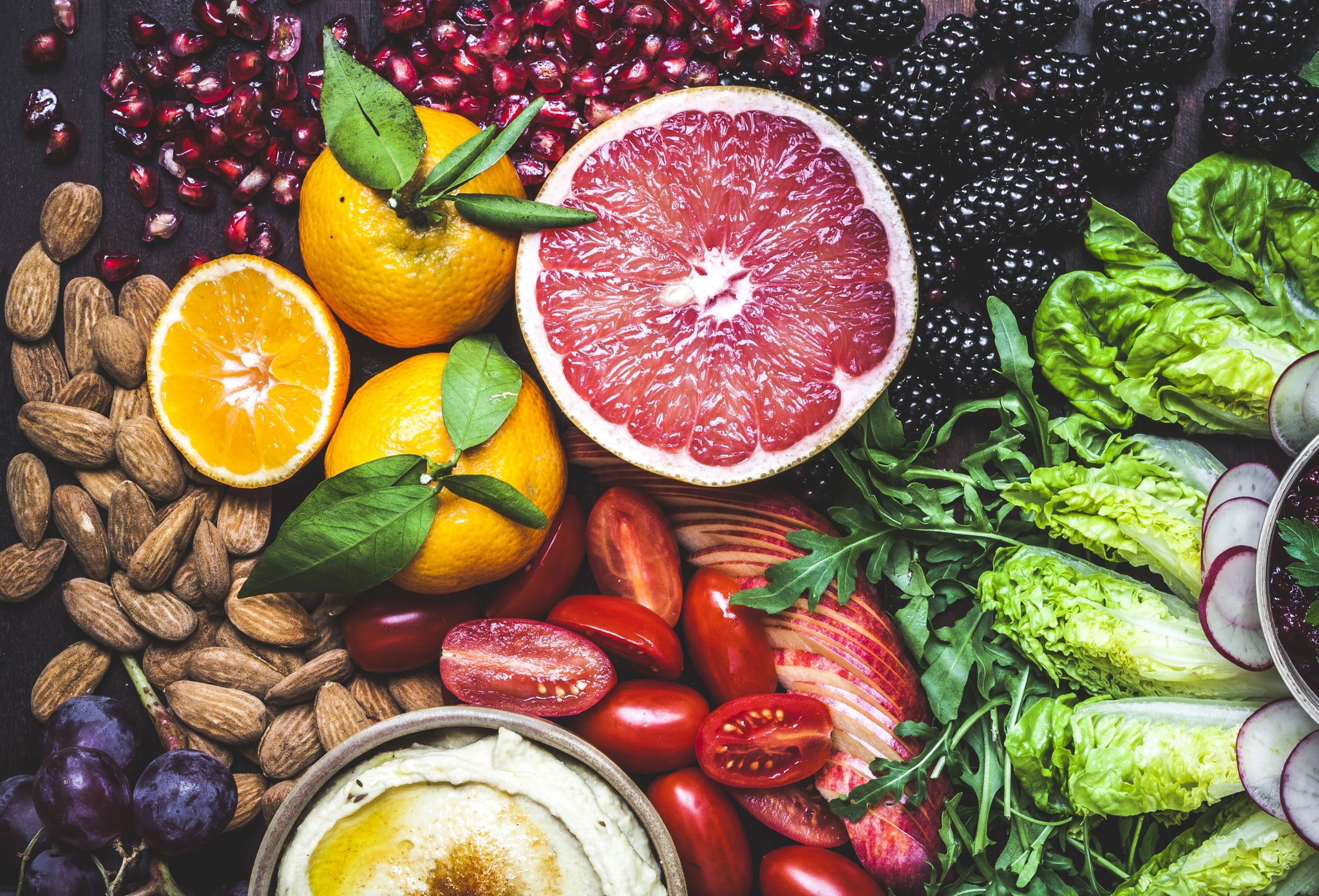
Smoothie recipes go viral all the time on social media. But one in particular caught our attention: a 30-plant veggie “slurry” on TikTok from neurologist Chris Lowery, Ph.D, said to boost your gut microbiome. At the beginning of the month, he creates a veggie “slurry” with 30 different plants including arugula, kale, leek, turmeric root, parsley, and beets (just to name a few). He adds a small amount of each vegetable to a blender with six cups of water, blends it together and stores the juice in the fridge (it keeps for about a month without spoiling since it’s all veggies and no fruit). Every day, he adds four tablespoons of the slurry into a quart of water and drinks it for a supposed microbiome boost.
Not yet sold on the idea? Well, researchers at the American Gut Project found that people who ate more than 30 different plant foods each week had a more diverse gut microbiome compared with those who ate 10 or fewer. The research also showed that people who hit the 30 mark had more bacteria in their gut that produce something called short chain fatty acids, which have been shown to reduce the risk of bowel cancer. But does a diversity of plant foods actually lead to a healthier gut? POPSUGAR spoke to integrative gastroenterologist and certified lifestyle medicine physician, Christina Tennyson, MD, to find out.
Will Eating 30 Different Plant Foods a Week Improve Your Gut Health?
Yes. It’s important to remember that fiber is present only in plant foods such as fruits, vegetables, whole grains, beans, nuts, and seeds, and serves as food for our gut bacteria, Dr. Tennyson told POPSUGAR. If we don’t feed our gut bacteria, they won’t thrive or be able to do their beneficial job of making vitamins, training our immune system, making helpful substances like short chain fatty acids, and communicating with our brain. There is no fiber in animal products like meat, fish, eggs, and dairy, so it’s really important for people to get enough from plant foods. Also, be mindful that consuming excessive amounts of sugary foods and alcohol can lead to an imbalance in the gut microbiome. Eating a variety of plant foods throughout the week, up to 30 if you can, helps to increase the diversity of the bacterium in the gut microbiome, preventing the imbalance that can lead to health issues like stomach upset and difficulty digesting. Diversity has been associated with improved health outcomes including decreased chronic disease and less inflammation, explained Dr. Tennyson.
How Can I Eat 30 Different Plant Foods a Week?
Taking time at the beginning of the week to plan out your meals and go grocery shopping will help ensure that you get a variety of plant based foods. If you rarely eat plant foods, or are a picky eater, small changes can make a big difference, said Dr. Tennyson. For example, if you choose one plant food for each of your three meals plus one snack (four times a day), and you do that every day of the week, that’s already 28 different plant foods. You can also get creative and combine plant foods: carrot cake oatmeal made with shredded carrots, banana, and oats, and topped with blueberries, for example, includes four different plant foods in one meal.
Sample Plan to Get 30 Plant Foods a Week
Drinking Dr. Lowery’s viral veggie juice isn’t the only way to meet your plant count. If you aim to eat four to five different plant foods a day each week, you’ll be able to reach your goal. The meal plan below incorporates 30 different plant foods.
|
Day of the Week |
Breakfast | Lunch | Dinner | Snack | Total Number of Plant Foods (different from the previous days) |
|---|---|---|---|---|---|
| Sunday | Bagel with egg and cheese | Kale salad with roasted butternut squash | Burrito with kidney beans and rice | Carrots and hummus | 6 |
| Monday | Oatmeal with raspberries | BLT | Chicken with broccoli | Apple and peanut butter | 7 |
| Tuesday | Eggs and toast | Pasta salad made with red onion and olives | Pizza with green peppers | Yogurt with blueberries | 4 |
| Wednesday | Smoothie made with spinach and blueberries | Arugula salad with strawberries | Pasta with tomato sauce | Snickerdoodle cookie | 4 |
| Thursday | Egg and avocado toast | Kale salad with chickpeas, peppers, and pumpkin seeds | Chicken with red potatoes | Carrots and hummus | 5 |
| Friday | Yogurt and blueberries | Quinoa salad made with black beans and mango | Pepperoni pizza | Apple with peanut butter | 3 |
| Saturday | Pancakes with berries | Sandwich with sliced turkey and avocado | Spaghetti and meatballs in tomato sauce | Orange | 1 |
Take a look at what you eat throughout the week, and see if you’re already hitting this target, or if you could add some plant foods here and there to increase the variety. If you’re not eating many plant foods at all, Dr. Tennyson says to gradually increase the amount over several weeks to a month (one new plant food every three to five days), as consuming a ton of fiber when you’re not used to it can cause digestive upset.
Image Source: Getty /Enrique Díaz / 7cero
